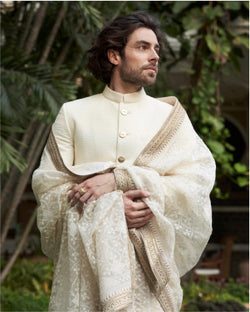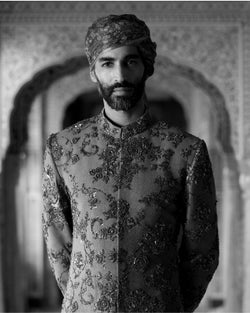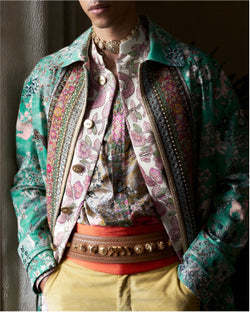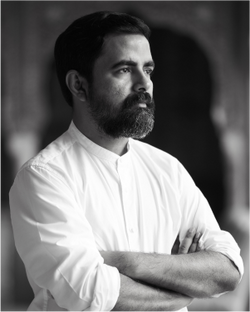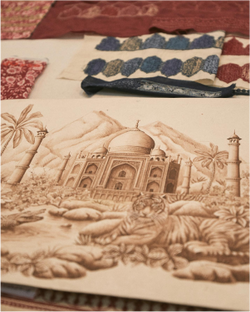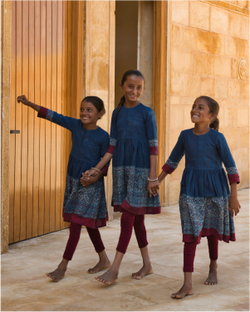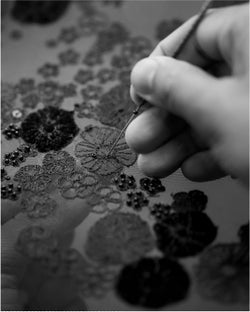Sabyasachi empowers and enables the finest of Indian crafts by working with craftspeople and craft clusters on models of economic sustainability. Over the last two decades, Sabyasachi has identified India’s finest craft clusters and artisan communities including weavers, block printers, embroiderers, dyers, craftspeople, goldsmiths, mill workers, stone masons, furniture artisans working with jewellery, clothing, leather and interiors—and has established financially sustainable practices and long term relationships.
From handwoven fabrics such as fine khadis, tussars, matka silks, native silks, and so on. To handwoven crafts—Benarasi and Tissue from Varanasi in UP, Kantha from Barasat in Bengal, Kalamkari from Machilipatnam in AP, Gaji from Vatva in Gujarat, Badla and Chikankari from Lucknow in UP, Chanderi from Chanderi in MP, Pashmina from Ganderbal in Kashmir, Patola from Patan and Rajkot in Gujarat, and Kanjivaram from Kanchipuram in Tamil Nadu. Be it jadau in Rajasthan or temple jewellery crafts and nakashi in Southern India—Sabyasachi Jewellery works with the finest of jewellery crafts from India.
Today, Sabyasachi employs about 1,000 craftspeople across his ateliers. Having created a wave of reverse migration of artisans back to the various villages and towns across the state of Bengal and to the city of Calcutta. And has worked with over 3,000 craftspeople, master weavers and artisans from across the country over the past two decades. Sabyasachi believes that the future of artisanal crafts and handwoven textiles is in preserving and reviving the finest of India’s legacy crafts to create exceptional heirloom quality products. The future of craft therefore lies in luxury, and for Sabyasachi that is India’s biggest strength and contribution to fashion and jewellery.
“The French have claimed couture. India’s reservoir of craft runs deep, both in terms of legacy and skill. Yet we have never had the confidence to assert this on the global stage. I intend to change that.”


























